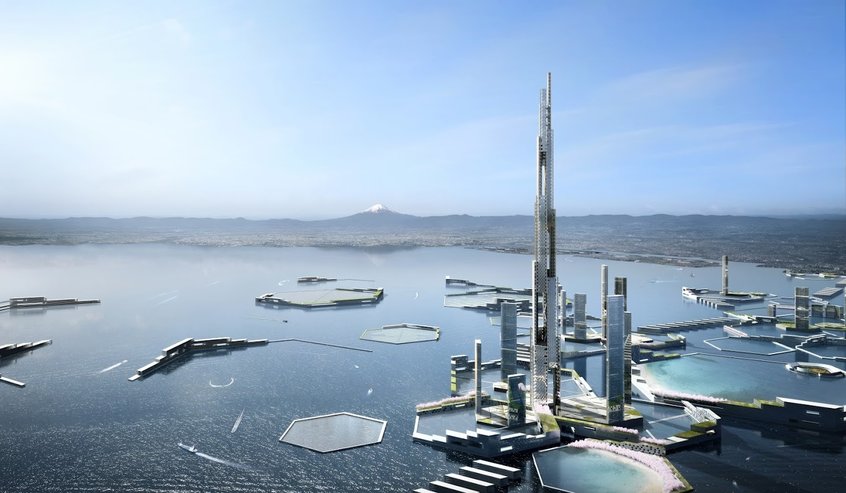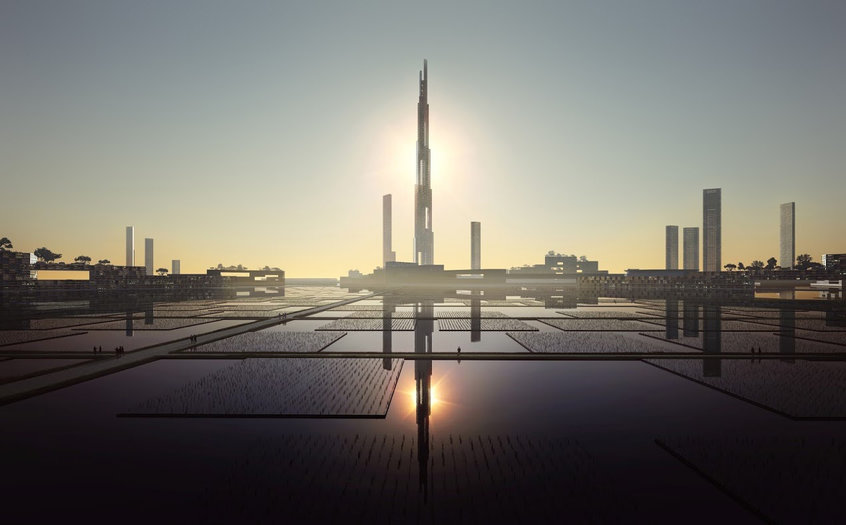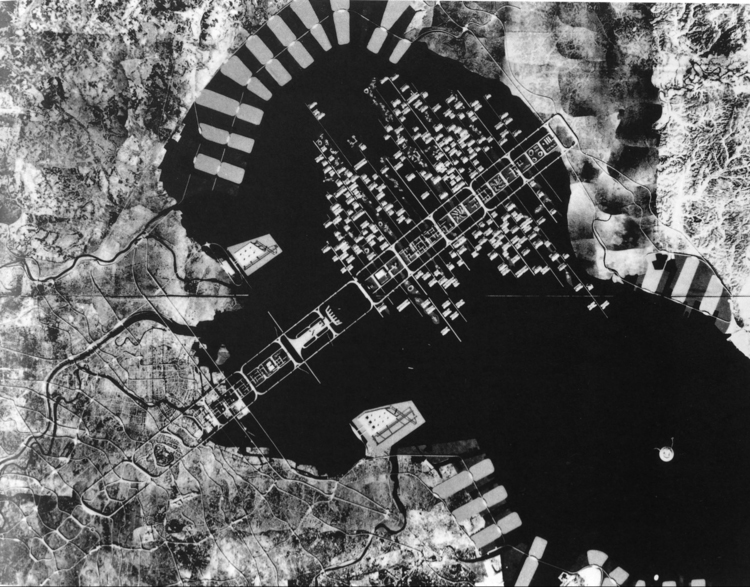US architect Kohn Pedersen Fox (KPF) and structural engineer Leslie E Robertson Associates (LERA) have proposed the creation of a new city in Tokyo Bay that will include a “cloud harvesting” mile-high residential tower and a Hyperloop transport system.
The city would be built on a series of reclaimed islands stretching across the 14km span of the bay. The aim is to help defend it against earthquakes, floods and typhoons, which are likely to be exacerbated by global warming.
The plan, called “Next Tokyo”, envisages using the islands as a physical buffer to protect Tokyo’s low lying shoreline, as well as providing homes for about half a million people.

The mile-high tower would be designed to lessen wind resistance
The nerve centre of the project is the 1,600m-high tower, which would be able to accommodate 55,000 people.
To avoid pumping water to the upper storeys, the façade of the building would be designed to collect, treat, and store water from clouds and pipe it to apartments using gravity distribution.
And to tackle the question of vertical transport – the bête noire of supertall buildings – the tower would make use of ThyssenKrupp’s Multi cable-free elevators, which can run vertically and horizontally.

The city would have aquaponic enclosures for growing algae
The city would also include urban farms, including “fields” on the bay itself, which could be used to grow algae.
The futuristic scheme was put forward as a Council on Tall Buildings and Urban Habitat research paper last year.
The idea of building on Tokyo Bay is not a new one. At the time of the 1960 Tokyo Olympics, the Metabolist architect Kenzo Tange proposed the building of a “linear megastructure” across the bay – effectively a city on a bridge.

The idea of building on the bay was also discussed in the late 1950s by the Metabolist school
The possibility of installing a Hyperloop may encounter resistance from the Japanese authorities, who are trying to persuade the American government to buy into its version of ultra-fast maglev transportation, beginning with a line between Baltimore and Washington.
Photographs by Kohn Pedersen Fox Associates
Comments
Comments are closed.











Just what would happen if a million to one chance of a Tsunami or tidal wage were to enter the bay > it could easily reach 20-50 meters high under the right conditions? , what chance would this city have of survival ?
I am not clear how rainwater falling on tower surface will be treated for reuse
David, I can’t presume to answer your question, but I can tell you that the Kansai Airport is 20km from the epicenter of the 1995 Kobe earthquake. The building survived the event without even a single cracked light of glass. They managed to figure out how to deal with the fact that the island sinks too. I’d be surprised if they don’t have tsunamis accounted for in Tokyo. All that said, valid questions just the same.